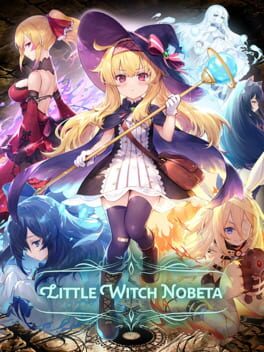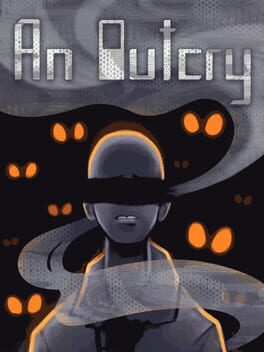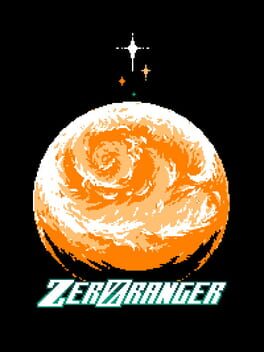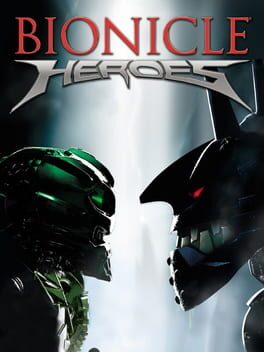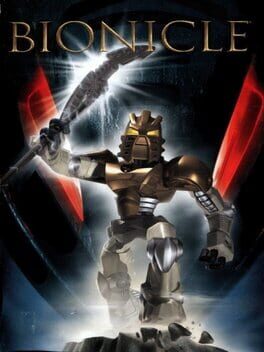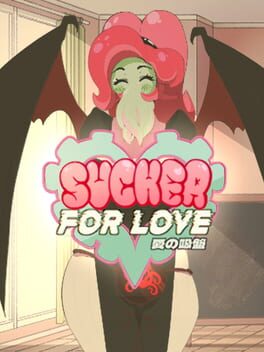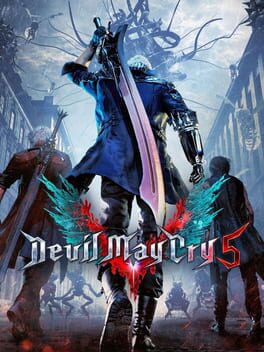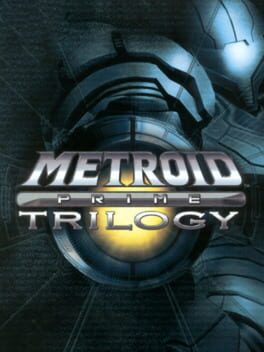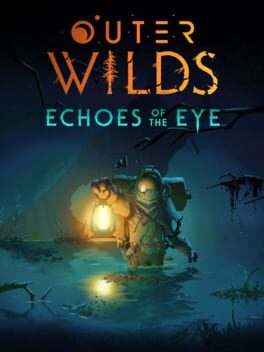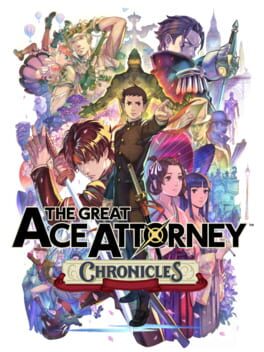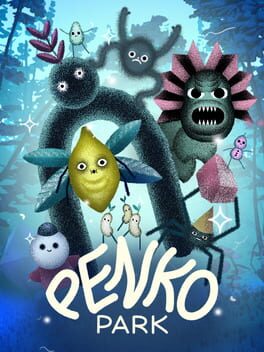Gross_Standards
2022
This review contains spoilers
My biggest fear in playing this game was that it would lose what I felt was the soul of the first: its unhingedness. FP1 had a total devotion to making stuff more or less difficult if that would serve the tone of the scene. Even in cutscenes, the still amateurish voice actors screamed to the top of their lungs. It was their teenage preferences given wings in adulthood, and its enthusiasm was contagious. One could definitely feel how much fun and passion they poured into that dream child.
The slow build up on tension this game's story takes helped not those fears, with the game putting a lot of emphasis on the newfound world peace the characters fulfilled in the first game and how much more powerful and mature they have all become.
However, as soon as the part of the archipielago comes in, all my fears were dispelled. Absolutely bonkers stage concepts like the Ancestral Forge or bosses like the Astral Golmech serve exclusively the purpose of elevating the intensity of its narrative.
Characters like Aaaa or Askal are super annoying in cutscenes or have very little screentime, but they win you over thanks to their repeated and diverse boss fights, and when entire stages move around actions they take in cutscenes. Kudos on the excellently designed fight against Merga, with so many stages that it seemed advised by Treasure Inc. themselves.
As the credits rolled, I was smiling widely. Not only because this studio has not given up their inner child, but because one can feel their growth as a developer. Everything is more sophisticated, the story takes its time, and characters are equally fun to play now.
Many of the amateurish voice actors are now prominent roles in the industry of voice acting, and some were about to give up completely on it until Galaxy Trail gave them the chance to revisit their past passion. <<Success is at its best when you share it>> said the main director in an interview, and the way this series has changed lives, certainly lives up to that.
This game, this team, this passion project breathes so much positivity and personality that it makes me remember of why I fell in love with the medium and its unique possibilities to transmit emotions and stories, that would otherwise look half baked or basic in any other media.
Please, never lose that inner child of yours.
The slow build up on tension this game's story takes helped not those fears, with the game putting a lot of emphasis on the newfound world peace the characters fulfilled in the first game and how much more powerful and mature they have all become.
However, as soon as the part of the archipielago comes in, all my fears were dispelled. Absolutely bonkers stage concepts like the Ancestral Forge or bosses like the Astral Golmech serve exclusively the purpose of elevating the intensity of its narrative.
Characters like Aaaa or Askal are super annoying in cutscenes or have very little screentime, but they win you over thanks to their repeated and diverse boss fights, and when entire stages move around actions they take in cutscenes. Kudos on the excellently designed fight against Merga, with so many stages that it seemed advised by Treasure Inc. themselves.
As the credits rolled, I was smiling widely. Not only because this studio has not given up their inner child, but because one can feel their growth as a developer. Everything is more sophisticated, the story takes its time, and characters are equally fun to play now.
Many of the amateurish voice actors are now prominent roles in the industry of voice acting, and some were about to give up completely on it until Galaxy Trail gave them the chance to revisit their past passion. <<Success is at its best when you share it>> said the main director in an interview, and the way this series has changed lives, certainly lives up to that.
This game, this team, this passion project breathes so much positivity and personality that it makes me remember of why I fell in love with the medium and its unique possibilities to transmit emotions and stories, that would otherwise look half baked or basic in any other media.
Please, never lose that inner child of yours.
2020
This game made me realize how could I love vastly different genres such as On-rail shooters and Hack and Slash and my indecision and nitpickiness about shooters in general:
I love the feeling of studying my enemies, feeling like I am in sync with them. It is going to sound weird, but I always felt like I was making some sort of tribute to the animation team: Being so in love with your animations, that I follow and trace them by heart like I'm dancing to them, or drawing on them. And this game, in a deceptively simple manner, nails that feeling like few others.
In the melee department, just dodges and parries with an ample window contribute to the fantasy of perfectly predicting your foes, liberating orbs in the process that you can either use to replenish your bars or absorb them into your special charge attacks ala Ninja Gaiden. Animations have the right amount of Wind-up and release, without becoming forcibly unpredictable like in some Souls games.
But where I did not expect the game to shine as much was in the shooting mechanics. Enemies all have a weakspot (usually, the head) that grants extra damage, multiplied if shot during a parry window. What was more surprising, was the deduction of damage if that weak spot is partially covered by a pierceable object (such as a hand or a shield). And this is no accessory, because enemies will intentionally twitch and obfuscate their weak spot during their wind-up and recovery animations so that it is difficult to aim at them.
Making animations that are BOTH satisfying to time in a melee context and satisfying to follow with the reticle of a gun like you would in an action-era Resident Evil is an incredibly commending job for an indie studio, specially when shooting at weak spots is a mechanic that people rarely nail nowadays, both visually and importance wise.
Which is, precisely, why it saddens me that the later weapons of the game get so absurdly broken that the game becomes a matter of spamming parries and big attacks rather than the methodical approach of its first three bosses. This results in a still very fun later half of the game, but one you feel overpowered going through. I would have loved to approach the final excellently designed bosses with the same tension I approached the first three.
I love the feeling of studying my enemies, feeling like I am in sync with them. It is going to sound weird, but I always felt like I was making some sort of tribute to the animation team: Being so in love with your animations, that I follow and trace them by heart like I'm dancing to them, or drawing on them. And this game, in a deceptively simple manner, nails that feeling like few others.
In the melee department, just dodges and parries with an ample window contribute to the fantasy of perfectly predicting your foes, liberating orbs in the process that you can either use to replenish your bars or absorb them into your special charge attacks ala Ninja Gaiden. Animations have the right amount of Wind-up and release, without becoming forcibly unpredictable like in some Souls games.
But where I did not expect the game to shine as much was in the shooting mechanics. Enemies all have a weakspot (usually, the head) that grants extra damage, multiplied if shot during a parry window. What was more surprising, was the deduction of damage if that weak spot is partially covered by a pierceable object (such as a hand or a shield). And this is no accessory, because enemies will intentionally twitch and obfuscate their weak spot during their wind-up and recovery animations so that it is difficult to aim at them.
Making animations that are BOTH satisfying to time in a melee context and satisfying to follow with the reticle of a gun like you would in an action-era Resident Evil is an incredibly commending job for an indie studio, specially when shooting at weak spots is a mechanic that people rarely nail nowadays, both visually and importance wise.
Which is, precisely, why it saddens me that the later weapons of the game get so absurdly broken that the game becomes a matter of spamming parries and big attacks rather than the methodical approach of its first three bosses. This results in a still very fun later half of the game, but one you feel overpowered going through. I would have loved to approach the final excellently designed bosses with the same tension I approached the first three.
2022
This review contains spoilers
An Outcry is one of those few games which I feel like they are not for me at all, but I played out of emotional masochism.
This is a turn-based RPG maker game with a high emphasis on its themes. It is a game which condemns neutrality and equals it to cowardice. The only true characters are those which are broken, struggling, confrontational against evil and living true joy out of the few moments of mental peace they find.
Commodity is seen as ignorance, people misgendering the character because they would rather not understand what the fuck is an enbi and how it would shake their understanding of identity in general, or worse, out of evil and despise of the unnamed's nature.
The obviously neonazi crow army is not portrayed as persons, but a force of nature made flesh: birdness, despise of everything different, eventual massacre after the late realization that everyone is in their own different, ultimate moral death and fixation on their dangerous goals, no matter how much hypocrisy, cowardice, violence and intimidation it takes to achieve it. They don't have a clear ideology, nor do we have clear what makes for a bird, the only thing you know is that perhaps nobody around truly belongs within them despite their promises.
Not taking action and ignoring the outcry is taken as existential dread, as an outside force robbing the Unnamed's uniqueness and voice, perhaps in an attempt to bring it closer to the player. But unlike other games where neutrality is granted a pat on the back, this game takes it as an illness because of which everyone Aster loves dies or ends up hating them. The game looks specifically at you and condemns you for robbing the game of its purpose and voice, of the immersive empathic factor it tried to project, and turns it around by breaking the 4th wall to attack you.
As a largely coward person who is still allured by neutrality, this game felt like it was trying to instir a change within me. It comes to mind the sentence of Hbomberguy "Gamers want political games, and precisely those complaining about politics in games are the ones who wish politics in them the most." I don't know if this game will do any of it within me, but at least it is a empathy door to the frustration minorities feel against the condescendancy of their peers. I apologize to them for not being able to be truly there for them.
As such, and reflecting that, this game shall remained unscored by someone who doesn't truly understand what it conveys nor did its apparent message reach. The review I made on steam was void yet possitive, for I appretiate this game's vibe, so hopefully the spoiler tag and this website serve as a shelter of my true thoughts.
This is a turn-based RPG maker game with a high emphasis on its themes. It is a game which condemns neutrality and equals it to cowardice. The only true characters are those which are broken, struggling, confrontational against evil and living true joy out of the few moments of mental peace they find.
Commodity is seen as ignorance, people misgendering the character because they would rather not understand what the fuck is an enbi and how it would shake their understanding of identity in general, or worse, out of evil and despise of the unnamed's nature.
The obviously neonazi crow army is not portrayed as persons, but a force of nature made flesh: birdness, despise of everything different, eventual massacre after the late realization that everyone is in their own different, ultimate moral death and fixation on their dangerous goals, no matter how much hypocrisy, cowardice, violence and intimidation it takes to achieve it. They don't have a clear ideology, nor do we have clear what makes for a bird, the only thing you know is that perhaps nobody around truly belongs within them despite their promises.
Not taking action and ignoring the outcry is taken as existential dread, as an outside force robbing the Unnamed's uniqueness and voice, perhaps in an attempt to bring it closer to the player. But unlike other games where neutrality is granted a pat on the back, this game takes it as an illness because of which everyone Aster loves dies or ends up hating them. The game looks specifically at you and condemns you for robbing the game of its purpose and voice, of the immersive empathic factor it tried to project, and turns it around by breaking the 4th wall to attack you.
As a largely coward person who is still allured by neutrality, this game felt like it was trying to instir a change within me. It comes to mind the sentence of Hbomberguy "Gamers want political games, and precisely those complaining about politics in games are the ones who wish politics in them the most." I don't know if this game will do any of it within me, but at least it is a empathy door to the frustration minorities feel against the condescendancy of their peers. I apologize to them for not being able to be truly there for them.
As such, and reflecting that, this game shall remained unscored by someone who doesn't truly understand what it conveys nor did its apparent message reach. The review I made on steam was void yet possitive, for I appretiate this game's vibe, so hopefully the spoiler tag and this website serve as a shelter of my true thoughts.
2018
This review contains spoilers
I think this game incarnated my personal validational needs and weaponised them in an uncannily close way that it felt like it was targetting me. I'm well aware that it was merely a coincidental occurrence, but I need to vent about it.
The Shoot'em up genre is an extremely uninviting one, almost as much as fighting games, for polary opposite reasons. Fighting games thrive on community and competence, on people who slowly improve together and don't give up, making newcomers to the genre weary of their insufficiency.
Shoot'em up games thrive on individual self improvement, like an endurance obstacle course. A single segment speedrun focusing on survival rather than speed. They are intimidating by design, yet equally thriving on community. However, unlike fighting games, a minimal is required to validate your playthrough of any game.
Shoot'em ups breaking this arcadey formula are (or rather were) very frowned upon. Assistance systems such as infinite continues are on the same level as a checkpoint or an easy mode. There is no gradual player level, you either cut it out or don't. And when you cut it out, you find out there may be harder ways to play the game and those are the ones that actually count.
There are certain communities very fixated on the "right way" of playing videogames, specially if you want to talk about them. They turn what games you play, how you percieve them and how you play them into status symbols, into sparks of drama and ostracism. They are not niche groups, they thirst for people who share their confrontationalism and apply it to every genre and topic conceived. It is truly not about the "right-way" of playing a videogame, it is about fabricating a hierarchy. And of course, STGs and their 1ccs were no exception.
Zeroranger on the other hand seemed to be going on a different vibe which escaped them. The checkpoint system seemed more akin to regular action games rather than getting an instant revival like pouring another credit in an arcade machine would do. It seemed that this game was more about adventure than the accursed self improvement, than the "right-way" of playing the genre.
But the game has a surprise: its buddhist themes. Reincarnation as a punishment for not seeing the truth, for being too attached to material needs or not working out your spirit. And the truth this game punishes you for not understanding is the accursed "1cc run". The game essentially turns your remaining credits into a lifebar for the final segment of the game, and wipes out your high scores and progress if you spefically fail at it. The game mocks you for being too coward to confront this final challenge, and won't unlock its single steam achievement until you do.
It is a cruel twist, it seemed like those communities I so far had I ran away from built a fake inviting shrine and waited me to step on it, just to tell me I can't escape from their truth. The "right-way" is ilumination, puts you on a superior tier of existence. Accepting the challenging side of it and enduring its hardships is what proves your worth. Changing your mindset into accomodating the frustrating "right-way" into you is the sole way of enduring its challenge, you can't endure it unless you are like us.
Playing this game became personal, hellish torture for me, every definitive death a personal reminder that I will always be under them. It reached a point where I only specifically played the game on my shittiest days, on fear it would ruin the rest. I think the game rebooted itself 5 times before I managed to clear it.
Thankfully, the game had been patched, so I could attribute my victory to Decker being buffed other than conceiding their viewpoint. A saving grace should I say, for even that victory would have chased me like a screeching ghost.
It's been a long time since that view has shimmered away and I play games for what make me feel rather than for their analytical innards. But this game will always be my cold reminder of what holes can you bring yourself to without perspective.
The Shoot'em up genre is an extremely uninviting one, almost as much as fighting games, for polary opposite reasons. Fighting games thrive on community and competence, on people who slowly improve together and don't give up, making newcomers to the genre weary of their insufficiency.
Shoot'em up games thrive on individual self improvement, like an endurance obstacle course. A single segment speedrun focusing on survival rather than speed. They are intimidating by design, yet equally thriving on community. However, unlike fighting games, a minimal is required to validate your playthrough of any game.
Shoot'em ups breaking this arcadey formula are (or rather were) very frowned upon. Assistance systems such as infinite continues are on the same level as a checkpoint or an easy mode. There is no gradual player level, you either cut it out or don't. And when you cut it out, you find out there may be harder ways to play the game and those are the ones that actually count.
There are certain communities very fixated on the "right way" of playing videogames, specially if you want to talk about them. They turn what games you play, how you percieve them and how you play them into status symbols, into sparks of drama and ostracism. They are not niche groups, they thirst for people who share their confrontationalism and apply it to every genre and topic conceived. It is truly not about the "right-way" of playing a videogame, it is about fabricating a hierarchy. And of course, STGs and their 1ccs were no exception.
Zeroranger on the other hand seemed to be going on a different vibe which escaped them. The checkpoint system seemed more akin to regular action games rather than getting an instant revival like pouring another credit in an arcade machine would do. It seemed that this game was more about adventure than the accursed self improvement, than the "right-way" of playing the genre.
But the game has a surprise: its buddhist themes. Reincarnation as a punishment for not seeing the truth, for being too attached to material needs or not working out your spirit. And the truth this game punishes you for not understanding is the accursed "1cc run". The game essentially turns your remaining credits into a lifebar for the final segment of the game, and wipes out your high scores and progress if you spefically fail at it. The game mocks you for being too coward to confront this final challenge, and won't unlock its single steam achievement until you do.
It is a cruel twist, it seemed like those communities I so far had I ran away from built a fake inviting shrine and waited me to step on it, just to tell me I can't escape from their truth. The "right-way" is ilumination, puts you on a superior tier of existence. Accepting the challenging side of it and enduring its hardships is what proves your worth. Changing your mindset into accomodating the frustrating "right-way" into you is the sole way of enduring its challenge, you can't endure it unless you are like us.
Playing this game became personal, hellish torture for me, every definitive death a personal reminder that I will always be under them. It reached a point where I only specifically played the game on my shittiest days, on fear it would ruin the rest. I think the game rebooted itself 5 times before I managed to clear it.
Thankfully, the game had been patched, so I could attribute my victory to Decker being buffed other than conceiding their viewpoint. A saving grace should I say, for even that victory would have chased me like a screeching ghost.
It's been a long time since that view has shimmered away and I play games for what make me feel rather than for their analytical innards. But this game will always be my cold reminder of what holes can you bring yourself to without perspective.
2006
This is what an actual soul less bionicle game would feel like. Art direction essentially copy-pasted from the toys, generic soundtrack, almost no narrative... A blatant attempt of inserting the lighthearted humor of the other more successful LEGO games and the self-insertable nature of the player, leaving behind the agency to the actual characters of an stage of the series that, at least in Spain, we got very little supplemental narrative material for.
2003
It's a true same the game is so basic and uninspired, because aesthetically it's the best fusion this series has ever got, mixing the shiny colourful comics (and its reverence to how the toys are actually built) to the movies' attempts at making the characters more cybernetic and expressive.
The music is another highlight for me, because even if it is not memorable by any means, it was a more honest attempt at fusing epic with the tribal roots of the series (and the more quiet ambiences of the Mata Nui Online game).
It definitely feels like a game made from fans of the source material, but with only two days to put the actual game in lol.
The music is another highlight for me, because even if it is not memorable by any means, it was a more honest attempt at fusing epic with the tribal roots of the series (and the more quiet ambiences of the Mata Nui Online game).
It definitely feels like a game made from fans of the source material, but with only two days to put the actual game in lol.
2017
As of 2021, within two months of its final update, I find myself greatly surprised by Yai Gameworks spirit in general and Red Haze.
The studio's lead person of interest, Duskgolem/Aestheticgamer/That creepy ass face you've surely seen on twitter, has a knack for showmanship that shows from the structure of some of its games to the surprisingly engaging community events he makes. Things such as an RPG maker game with limited lives that... can only be played on Twitch plays at selected dates, a limited time update to Red Haze that adds a super tricky risk or reward dungeon in exchange of extra costumes or just the way he presents his own developer commentaries embodying the character of his games, The Host. Duskgolem enjoys engaging with its niche audience, and loves making each individual experience unique and even exclusive at times.
This pholosophy is better seen in Red Haze, an apparently generic RPG horror game that doesn't mind holding back a lot until you're really engaged with it. The more endings you get, the more the game plays a masterful dance of streamlining boring events and making chill events difficult or tense. A previously innocent NPC that followed you while you did a simple enough puzzle will turn lethal from a random run onwards in exchange of you not having to do the puzzle anymore. Random mosters may appear at places they are not supposed to so that they can ambush you and kill you. And a given character catching you leads to a very creative stage that can grant you 4 different endings and even has a key mechanism to advance in the main story in subsequent runs.
These are just some examples to what makes Red Haze a truly special game that really grows on you the more you play it, the more you explore it. Even if its tone can be a bit overly angsty at times, the honesty, bluntness and passion with which it delivers itself will be something you'll draw charisma from. A game I truly recommend despite its traditionally unfair design at times. But that it's appropiately on it for the show.
The studio's lead person of interest, Duskgolem/Aestheticgamer/That creepy ass face you've surely seen on twitter, has a knack for showmanship that shows from the structure of some of its games to the surprisingly engaging community events he makes. Things such as an RPG maker game with limited lives that... can only be played on Twitch plays at selected dates, a limited time update to Red Haze that adds a super tricky risk or reward dungeon in exchange of extra costumes or just the way he presents his own developer commentaries embodying the character of his games, The Host. Duskgolem enjoys engaging with its niche audience, and loves making each individual experience unique and even exclusive at times.
This pholosophy is better seen in Red Haze, an apparently generic RPG horror game that doesn't mind holding back a lot until you're really engaged with it. The more endings you get, the more the game plays a masterful dance of streamlining boring events and making chill events difficult or tense. A previously innocent NPC that followed you while you did a simple enough puzzle will turn lethal from a random run onwards in exchange of you not having to do the puzzle anymore. Random mosters may appear at places they are not supposed to so that they can ambush you and kill you. And a given character catching you leads to a very creative stage that can grant you 4 different endings and even has a key mechanism to advance in the main story in subsequent runs.
These are just some examples to what makes Red Haze a truly special game that really grows on you the more you play it, the more you explore it. Even if its tone can be a bit overly angsty at times, the honesty, bluntness and passion with which it delivers itself will be something you'll draw charisma from. A game I truly recommend despite its traditionally unfair design at times. But that it's appropiately on it for the show.
2019
This review contains spoilers
Esto más que una review son un venting de sentimientos personales del juego respecto a un aspecto muy concreto, que es el desamor que le tiene a DMC2. Digan lo que quieran que se lo merece y tal, pero DMC2 dejaba abiertas ciertas preguntas de continuidad que esperaba ver a este DMC cubrir, y creo que en cierto punto lo iba a hacer.
Que Dante adquiera la forma Sin en este juego hubiera podido ser una buena conexión a la forma Majin del 2, y que Dante esté tan tristón en DMC2 podría haberse debido a que iba a matar a Vergil originalmente.
Sin embargo el cambio de la cronología prevista originalmente, a que DMC2 fuera antes que el 5 arruinó esta aparente conexión, haciendo parecer que Dante se había pinchado con una chinche ese día o yo qué sé. También hubiera molado aún así que Balrog fuera el arma obtenida de Argosax, o que hasta Cavaliere Angelo fuera la moto que usó para salir del infierno. Pero no, todo intentan atarlo malamente en una novela en la que declaran que Balrog es de un demonio random que mataron fuera de pantalla.
No sé, este aparente asco que esta saga tiene por su continuidad, si bien ha servido para un cierre medianamente optimista, hace que ese misterio hacia el que estaban construyendo se sienta ahora vacío, lo cual degenera un poco a DMC4 por estar hypeándolo.
Me parece un poco una pena, porque parte del crecimiento de un autor es saber reconciliarse con las partes fallidas de su obra y saber construir a partir de ellas, en vez de hacer tábula rasa, es una opción que me parece cómoda. Es como que las secuelas de Star Wars no sean canon porque no gustan a nadie o que Disney se cargue todos sus universos expandidos. Hay que joderse amigo.
Son todo teorías personales claro, mi nota refleja lo que sentí al pasarme el juego jaja.
Que Dante adquiera la forma Sin en este juego hubiera podido ser una buena conexión a la forma Majin del 2, y que Dante esté tan tristón en DMC2 podría haberse debido a que iba a matar a Vergil originalmente.
Sin embargo el cambio de la cronología prevista originalmente, a que DMC2 fuera antes que el 5 arruinó esta aparente conexión, haciendo parecer que Dante se había pinchado con una chinche ese día o yo qué sé. También hubiera molado aún así que Balrog fuera el arma obtenida de Argosax, o que hasta Cavaliere Angelo fuera la moto que usó para salir del infierno. Pero no, todo intentan atarlo malamente en una novela en la que declaran que Balrog es de un demonio random que mataron fuera de pantalla.
No sé, este aparente asco que esta saga tiene por su continuidad, si bien ha servido para un cierre medianamente optimista, hace que ese misterio hacia el que estaban construyendo se sienta ahora vacío, lo cual degenera un poco a DMC4 por estar hypeándolo.
Me parece un poco una pena, porque parte del crecimiento de un autor es saber reconciliarse con las partes fallidas de su obra y saber construir a partir de ellas, en vez de hacer tábula rasa, es una opción que me parece cómoda. Es como que las secuelas de Star Wars no sean canon porque no gustan a nadie o que Disney se cargue todos sus universos expandidos. Hay que joderse amigo.
Son todo teorías personales claro, mi nota refleja lo que sentí al pasarme el juego jaja.
This review contains spoilers
This DLC made all the right decissions to justify its existence. It feels like the missing half of the main Outer Wilds plot. Accepting the eventual death of everything and living to your fullest feels a bit half baked when every character was awfully stoic and seemed ready for that eventual end; not to mention the pristine honesty the Nomai and Hearthian records are composed.
This DLC provides that other, pessimistic half we needed to elevate the message. The consequences of fearing the future all too much, how individuals are twisted by their longing to a long past era, and how said longing can be weaponised to turn them into lifeless husks of what they were; and the sad reality of selective archival to make civilizations seem better than what they are. The fact that an individual stood tall against these odds and gave more importance to truth and acceptance feels more rewarding than the optimistic Hearthians and Nomai eras.
It makes me gain appretiation for the Outer Wilds base universe, its equally stoic and tragic tone and how powerful the message hits now that we see what could've been of the universe if handled by a civilization closer to our own.
This DLC provides that other, pessimistic half we needed to elevate the message. The consequences of fearing the future all too much, how individuals are twisted by their longing to a long past era, and how said longing can be weaponised to turn them into lifeless husks of what they were; and the sad reality of selective archival to make civilizations seem better than what they are. The fact that an individual stood tall against these odds and gave more importance to truth and acceptance feels more rewarding than the optimistic Hearthians and Nomai eras.
It makes me gain appretiation for the Outer Wilds base universe, its equally stoic and tragic tone and how powerful the message hits now that we see what could've been of the universe if handled by a civilization closer to our own.
This review will be based entirely on what this collection offers as new instead of rating the actual games that come within, which is the localization and the bonus content.
Having pre-ordered the game, I got the "From the Vaults" content, so I will base my experience on that.
The localization of this duology has been masterfully done. Janet Hsu elevated the text by its comical abundance of verbose, clever avoidance of outright racist terms, and even the decision to change the names of characters such as Herlock and Wilson. These decisions only add to the Victorian British overcompensating spirit, and solidify a world where fancy words and tricks gain more respect than actual competence, one where truth is dubious everywhere around you. In other words, the antithesis of the Phoenix Wright spirit: honest, transparent, simple to read and to the point. Add to this other details, such as the Japanese cast using honorifics only when no British character is present (implying they are resorting to their mother tongue), or the outright butchering of spelling whenever a low class citizen starts talking, and you have a work which compensates for the long waiting we endured for this duology.
As far as additional content goes, this collection offers a crapton of insights into the game's artistic development. Things such as concept art and beta soundtracks, all throughly discussed by the artists behind them, or fully subtitled trailers that were once japan exclusive; follow the spirit of the megaman collections: that a game compilation must also be a preservation machine, for memorabilia and development insights, before time ages enough to erase them.
I'm very happy with what Capcom did with this collection, unlike the barebones and overpriced Ace Attorney Trilogy, I hope it keeps setting an example among other developers.
Having pre-ordered the game, I got the "From the Vaults" content, so I will base my experience on that.
The localization of this duology has been masterfully done. Janet Hsu elevated the text by its comical abundance of verbose, clever avoidance of outright racist terms, and even the decision to change the names of characters such as Herlock and Wilson. These decisions only add to the Victorian British overcompensating spirit, and solidify a world where fancy words and tricks gain more respect than actual competence, one where truth is dubious everywhere around you. In other words, the antithesis of the Phoenix Wright spirit: honest, transparent, simple to read and to the point. Add to this other details, such as the Japanese cast using honorifics only when no British character is present (implying they are resorting to their mother tongue), or the outright butchering of spelling whenever a low class citizen starts talking, and you have a work which compensates for the long waiting we endured for this duology.
As far as additional content goes, this collection offers a crapton of insights into the game's artistic development. Things such as concept art and beta soundtracks, all throughly discussed by the artists behind them, or fully subtitled trailers that were once japan exclusive; follow the spirit of the megaman collections: that a game compilation must also be a preservation machine, for memorabilia and development insights, before time ages enough to erase them.
I'm very happy with what Capcom did with this collection, unlike the barebones and overpriced Ace Attorney Trilogy, I hope it keeps setting an example among other developers.
This review is based in the options the collection offers OUTSIDE of the 6 games. I would dare say it is a magnificient product. It knows not everyone wants to fulfill the demands of the NES era, and puts multiple tools for multiple skill levels.
-A single save slot for those lazy to memorize passwords (or those who want to go past tricky sections)
-A rewind button if you are really struggling with the game
-A practice mode for every robot master so you can experiment its weaknesses without risking losing time in the real game
And besides that, it gives other usability options. But for me, the cherry on top are the wonderfully compiled extras: artwork and biographies for every single enemy in all 6 games, and a challenge that remixes different sections from different games to put the most hardcore players skills to the test.
The megaman collections (starting with this one) are a wonderful example of what a compilation truly is: a preservation machine, an interactive museum of old relics. And that includes long past memorabilia and different ways to approach the games for both new and veteran players.
-A single save slot for those lazy to memorize passwords (or those who want to go past tricky sections)
-A rewind button if you are really struggling with the game
-A practice mode for every robot master so you can experiment its weaknesses without risking losing time in the real game
And besides that, it gives other usability options. But for me, the cherry on top are the wonderfully compiled extras: artwork and biographies for every single enemy in all 6 games, and a challenge that remixes different sections from different games to put the most hardcore players skills to the test.
The megaman collections (starting with this one) are a wonderful example of what a compilation truly is: a preservation machine, an interactive museum of old relics. And that includes long past memorabilia and different ways to approach the games for both new and veteran players.
2020
A chill safari sim with uncanny looking animals about negating the existence of the ugly in mother nature, and appretiating the unique quirkiness of its inhabitants. Unlike pokemon snap, this game rewards capturing each behavior of the creatures instead of finding the one perfect picture, which only elevates is message.

